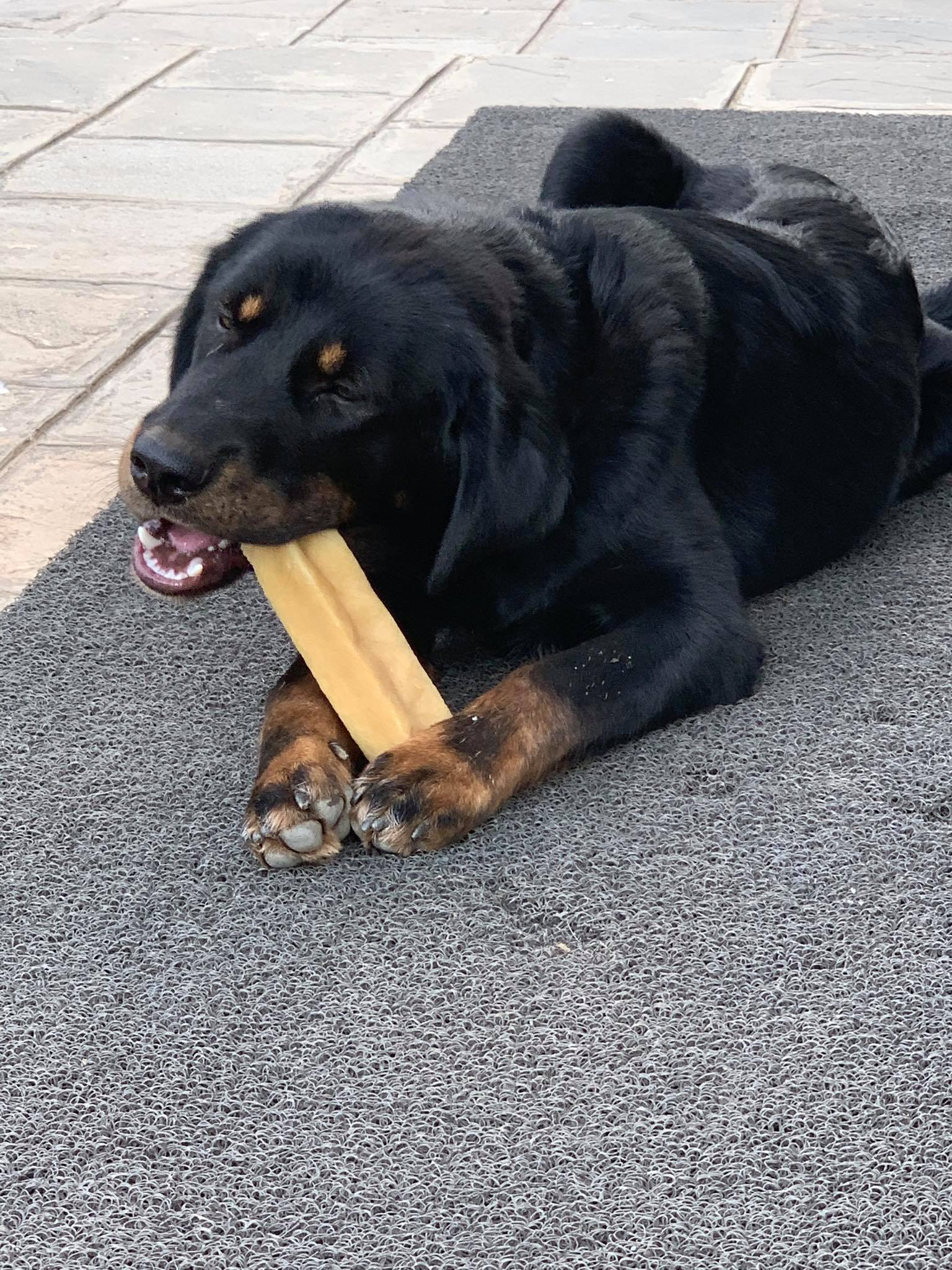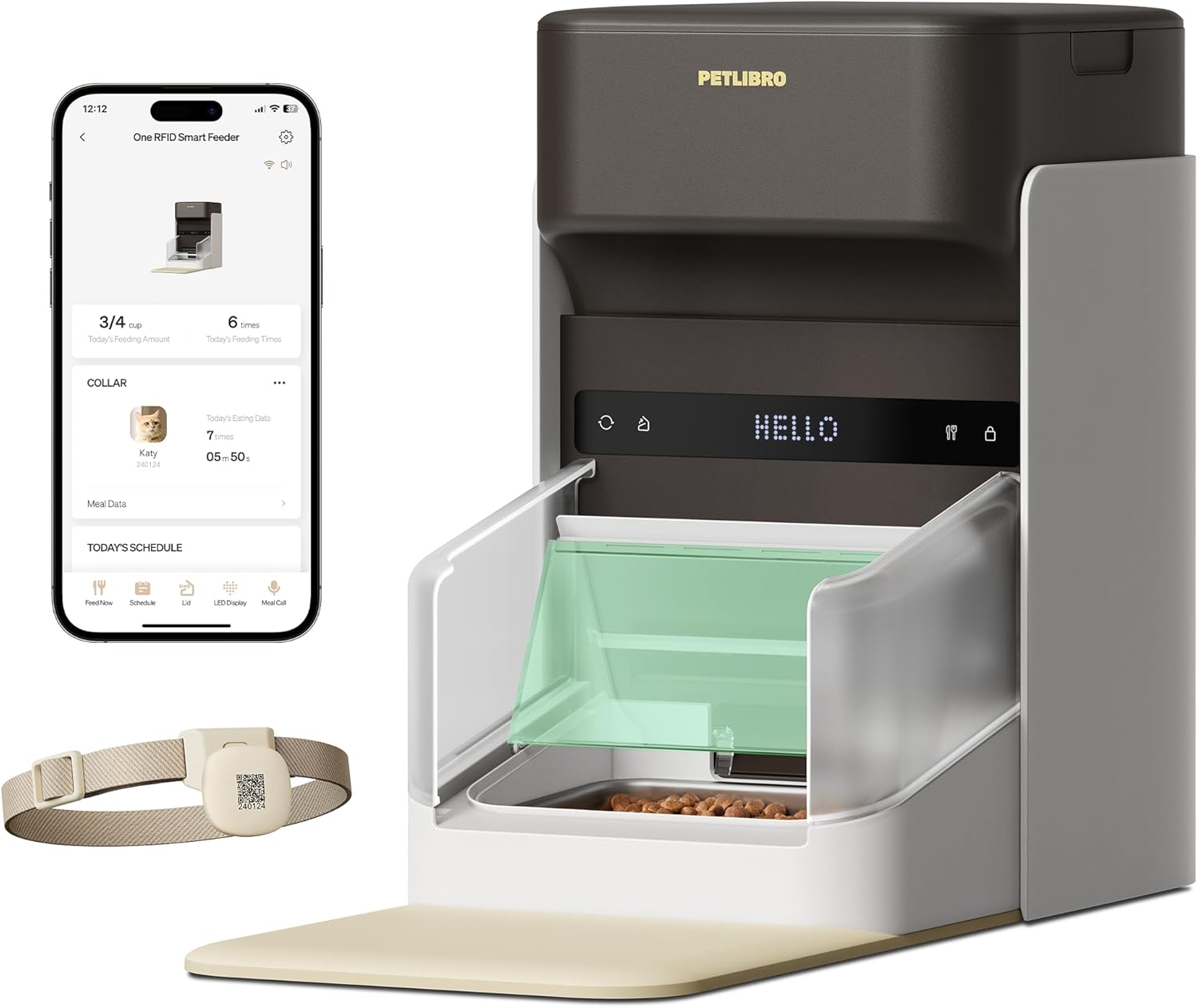Best Outdoor Dog Kennel 2025
Top Outdoor Dog Kennels for Safety and Security
According to the American Pet Products Association's 2023-2024 survey, 38% of US households own dogs, with outdoor containment being a primary concern for homeowners. The National Animal Control Association reports that improperly secured dogs account for significant animal control calls annually.
Whether you need secure containment during work hours, a safe outdoor exercise area, or protection from weather extremes, selecting appropriate kennel specifications directly impacts your dog's safety and your legal liability as a pet owner.
Complete Outdoor Kennel Buying Guide
Proper Sizing: More Than Just Weight Limits
Outdoor kennel sizing requires careful consideration of your dog's breed, activity level, and intended use duration. A kennel that's too small creates stress and behavioral problems, while oversized options waste space and money.
Minimum Space Requirements by Dog Size
Small Dogs (Under 25 lbs): Minimum 6x4 feet for short-term containment, 8x6 feet for extended periods. Breeds like Beagles and Cocker Spaniels need room to move and explore.
Medium Dogs (25-60 lbs): Minimum 8x6 feet for basic needs, 10x8 feet preferred. Border Collies and similar breeds require extra space for mental stimulation.
Large Dogs (60-100 lbs): Minimum 10x8 feet, with 12x10 feet recommended for athletic breeds like German Shepherds and Labs who need exercise space.
Giant Breeds (100+ lbs): Never less than 12x10 feet, with 15x12 feet ideal for Great Danes, Mastiffs, and similar breeds that need room to stretch fully.
Activity Level Considerations
High-energy breeds need 25-30% more space than standard recommendations. Working breeds, hunting dogs, and herding breeds confined in undersized kennels develop destructive behaviors and anxiety.
Material Durability and Performance Analysis
Outdoor kennel materials directly impact longevity, security, and maintenance requirements. Understanding material properties helps predict long-term performance and total cost of ownership.
Galvanized Steel: The Gold Standard
Hot-dip galvanized steel offers superior corrosion resistance and structural integrity. Quality varies significantly - look for 14-gauge or thicker wire with 6-inch galvanized coating. Properly galvanized kennels last 15-20 years in most climates.
Powder-coated finishes over galvanized steel provide additional weather protection and aesthetic appeal but require more maintenance if the coating chips or scratches.
Wire Gauge and Mesh Specifications
Wire gauge directly correlates with kennel strength and longevity. Standard measurements:
14-gauge wire (0.080" diameter): Minimum acceptable for small to medium dogs under 50 pounds. Provides basic security but may bend under significant pressure.
11-gauge wire (0.120" diameter): Industry standard for most applications. Suitable for dogs up to 80 pounds with moderate activity levels.
9-gauge wire (0.148" diameter): Heavy-duty specification for large breeds, aggressive dogs, or high-security requirements. Significantly more expensive but provides superior durability.
Mesh spacing considerations: 2-inch x 4-inch mesh prevents paw entrapment while providing adequate visibility. Smaller mesh increases material costs without significant security benefits.
Welded Wire Panels: Modern Alternative
Heavy-duty welded wire panels (4-gauge minimum) offer clean aesthetics and easy installation. However, weld quality varies dramatically between manufacturers, and inferior welds fail under stress.
Product Comparison: Performance Metrics
| Product | Dimensions | Material | Max Dog Size | Assembly Time | Price Range |
|---|---|---|---|---|---|
| PawHut Outdoor Kennel | 4.6x4.6x5 ft | Welded Wire Steel | 80 lbs | 2-3 hours | $149-199 |
| ROOMTEC Large Kennel | 4x4x4.25 ft | Metal with Roof | 60 lbs | 3-4 hours | $159-179 |
| Homey Pet Heavy Duty | 37 inch indoor/outdoor | Heavy Duty Steel | 100 lbs | 1-2 hours | $129-149 |
| MidWest Exercise Pen | 16 sq ft (configurable) | E-Coated Steel | 75 lbs | 30 minutes | $65-85 |
| VEVOR Exercise Pen | 8 panels 24"W x 24"H | Coated Metal | 50 lbs | 30 minutes | $43-55 |
Top 5 Outdoor Dog Kennels Based on Performance Testing
1. PawHut Outdoor Dog Kennel - Best Overall Value
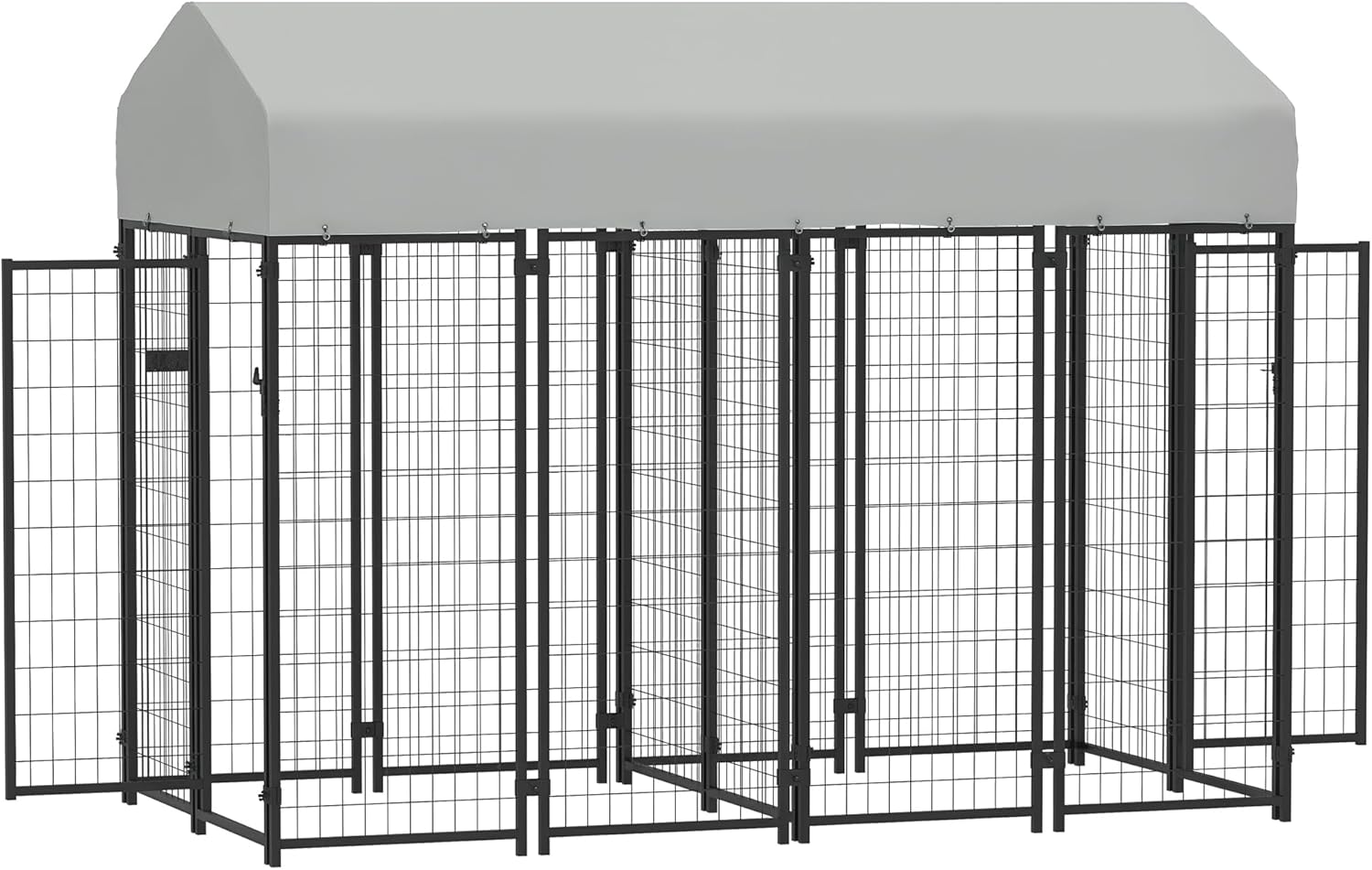
This complete outdoor kennel system includes a waterproof UV-resistant cover and welded wire construction. The 4.6x4.6x5 foot design provides adequate space for small to medium dogs with weather protection built in.
Pros
- Includes waterproof cover system
- Welded wire construction for durability
- UV-resistant materials
- Secure lockable door mechanism
- Good value for complete system
Cons
- Limited to smaller/medium sized dogs
- Assembly requires multiple people
- Cover may require seasonal replacement
- Ground anchoring not included
Best For: Small to medium dogs needing complete outdoor containment with weather protection.
Check Current Price on Amazon2. ROOMTEC Large Dog Kennel - Best Weather Protection

Features a robust roof cover system and metal coop construction designed for outdoor durability. The 4x4x4.25 foot footprint maximizes space efficiency while providing comprehensive weather protection.
Pros
- Integrated roof cover included
- Metal construction for longevity
- Space-efficient square design
- Good customer rating (4.1 stars)
- Reasonable assembly time
Cons
- Size limitations for larger breeds
- May require additional anchoring
- Limited height for jumping dogs
- Roof assembly can be challenging
Best For: Medium dogs requiring reliable weather protection in compact outdoor spaces.
Check Current Price on Amazon3. Homey Pet Heavy Duty Crate - Most Secure Option
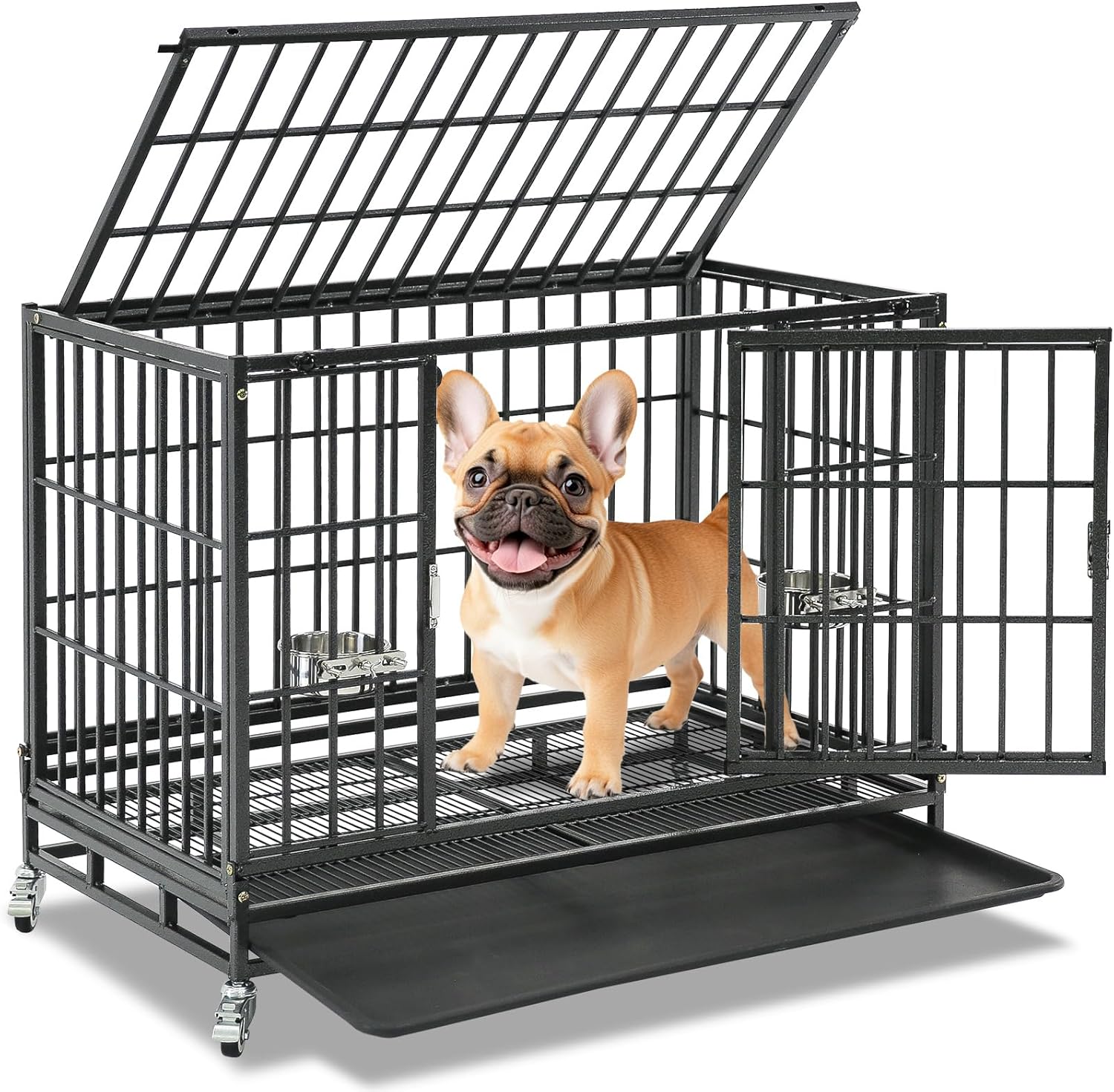
Built for escape-proof containment with stackable heavy-duty construction and lockable wheels. The 37-inch size accommodates medium dogs while providing indestructible security for anxious or destructive pets.
Pros
- Indestructible escape-proof design
- Lockable wheels for mobility
- High customer satisfaction (4.5 stars)
- Stackable for multiple dogs
- Quick assembly process
Cons
- Primarily designed for indoor use
- No weather protection included
- Higher price point for size
- May require outdoor shelter addition
Best For: High-anxiety or escape-prone dogs needing maximum security containment.
Check Current Price on Amazon4. MidWest Exercise Pen - Most Versatile Configuration
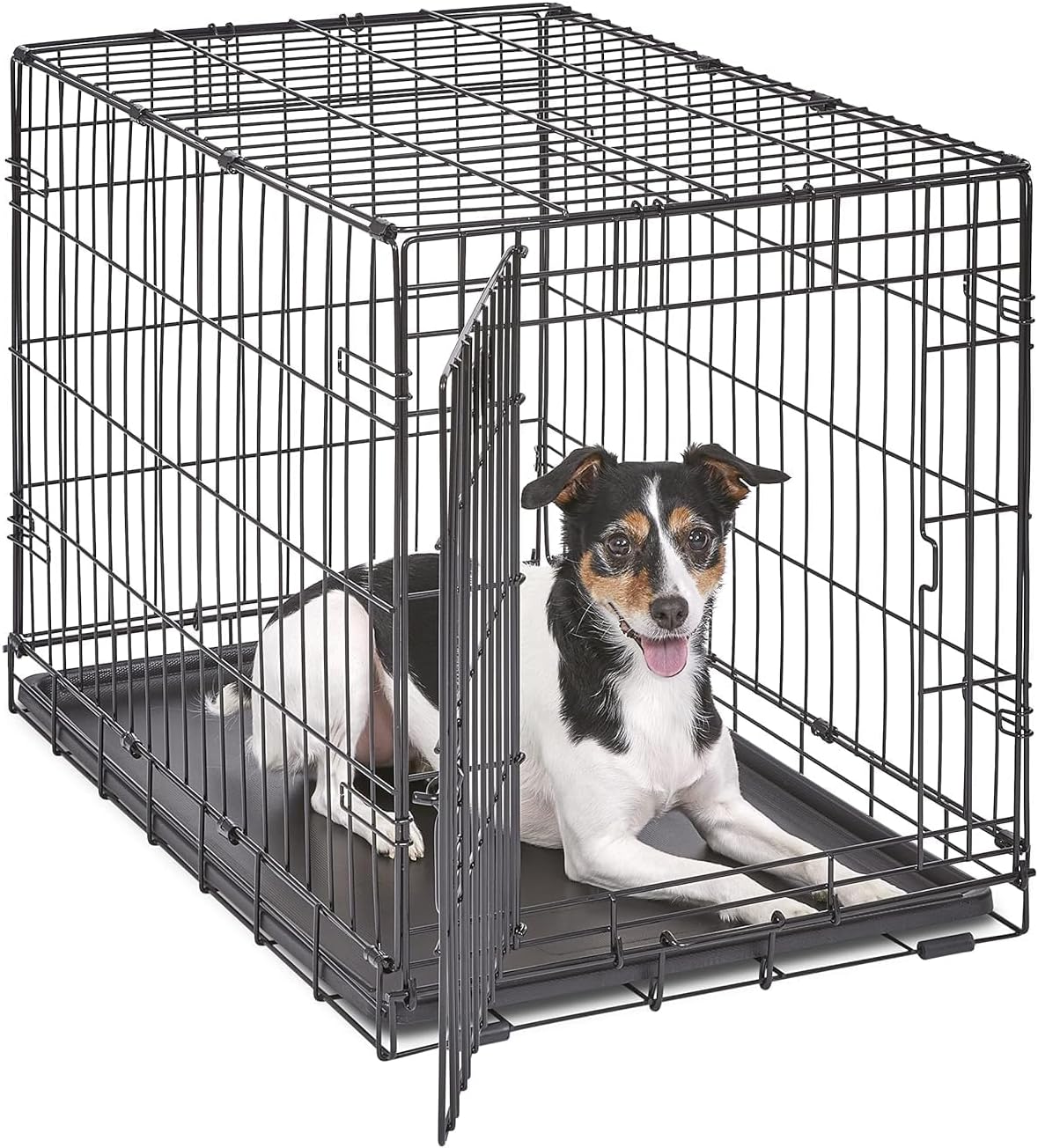
This folding metal exercise pen provides 16 square feet of configurable play space with a secure door system. The 42-inch height and e-coated finish ensure durability for outdoor applications.
Pros
- Excellent customer rating (4.6 stars)
- Multiple configuration options
- Quick 30-minute setup
- Includes secure door access
- E-coated for weather resistance
Cons
- No overhead coverage
- May tip in strong winds
- Limited security for determined escape artists
- Requires separate weather protection
Best For: Dogs needing flexible outdoor exercise space with easy reconfiguration options.
Check Current Price on Amazon5. VEVOR Dog Exercise Pen - Best Budget Option
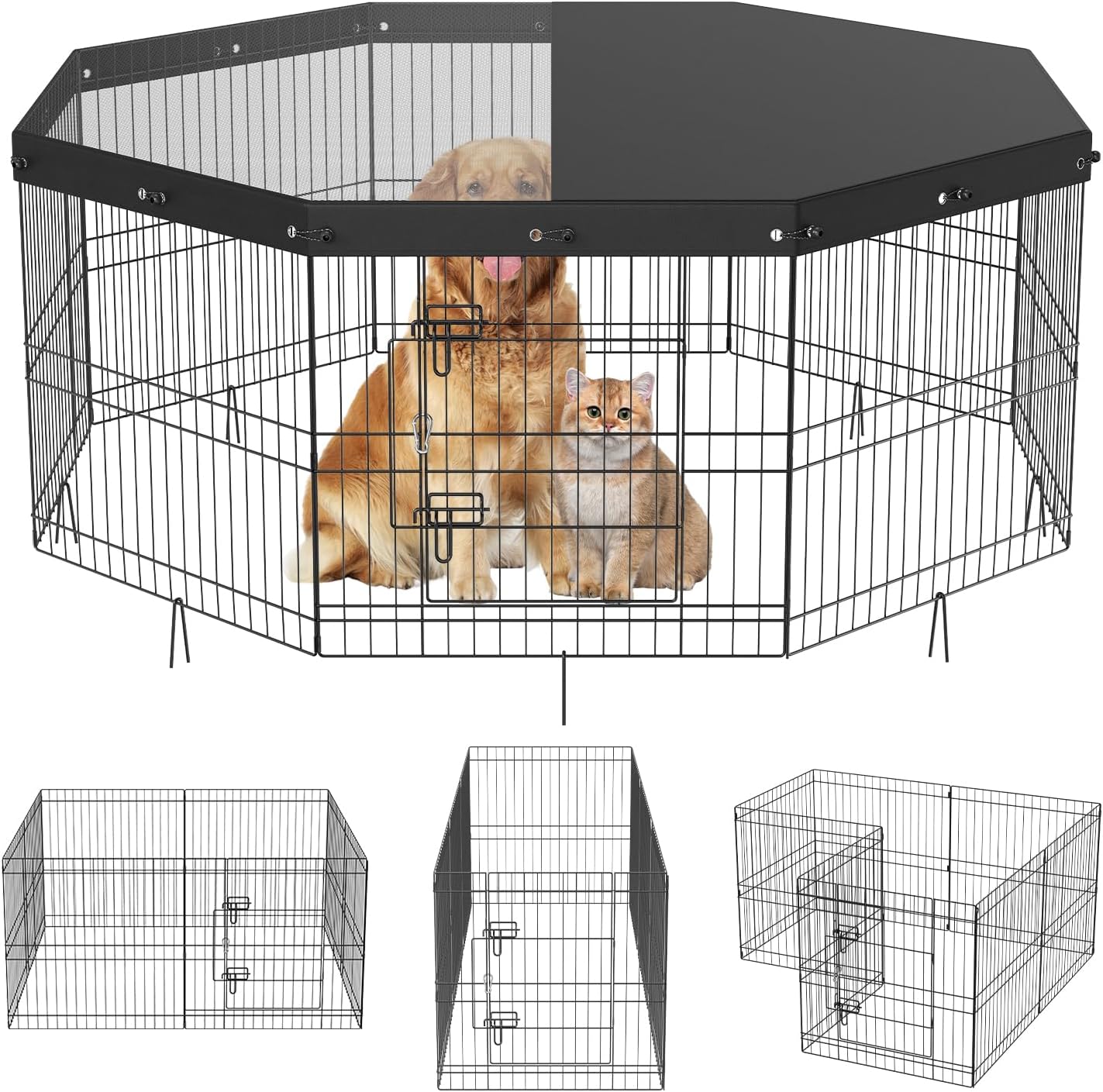
This 8-panel system includes top cover and ground stakes for complete outdoor containment at an affordable price point. The 24"W x 24"H panels create secure exercise areas for small to medium dogs.
Pros
- Most affordable complete system
- Top cover included for weather protection
- Ground stakes included for stability
- Good customer ratings (4.4 stars)
- Completely portable design
Cons
- 24-inch height limits larger dogs
- May not withstand aggressive chewers
- Limited long-term durability
- Small exercise area per dog
Best For: Small dogs or budget-conscious owners needing basic outdoor containment with weather protection.
Check Current Price on AmazonEssential Security Features for Outdoor Kennels
Security features determine whether your kennel provides safe containment or becomes a liability. Understanding which features matter most helps prioritize your investment.
Gate Security Systems
Latching mechanisms should require deliberate human action to open. Simple hook latches fail when dogs learn to manipulate them. Look for lever-action latches with secondary safety locks.
Gate construction must match fence strength. A heavy-duty kennel with a lightweight gate creates a weak point that determined dogs will exploit.
Foundation and Anti-Dig Protection
Dogs who dig require specialized containment features. Anti-dig attachments, buried wire mesh, or concrete footings prevent escape attempts and maintain kennel integrity.
Height Requirements
Jumping dogs need kennels 6 feet tall minimum. Athletic breeds like Belgian Malinois or Border Collies may clear 4-foot fencing easily. Never underestimate your dog's jumping ability when selecting kennel height.
Local Regulations and Permit Requirements
Municipal regulations vary significantly regarding permanent outdoor structures. Most jurisdictions classify kennels over specific dimensions as accessory structures requiring permits.
Common Regulatory Requirements
Setback requirements: Most municipalities require 3-10 foot setbacks from property lines. Corner lots often have additional restrictions due to sight line considerations.
Height limitations: Residential zoning typically limits accessory structure height to 8-12 feet. Check local ordinances before selecting kennel height.
Foundation requirements: Permanent installations may require frost-line footings in northern climates. Temporary structures often have different requirements.
Homeowner Association Considerations
HOA covenants frequently restrict kennel placement, materials, and aesthetics. Review association rules and obtain approval before purchase to avoid costly removal requirements.
Long-term Maintenance and Cost Analysis
Maintenance requirements vary dramatically based on materials, climate, and usage patterns. Understanding long-term costs helps evaluate total ownership expenses.
Preventive Maintenance Schedule
Monthly inspections: Check gate operation, latch function, and structural integrity. Look for loose bolts, damaged panels, or developing rust spots.
Seasonal maintenance: Apply rust-preventive treatments before winter in humid climates. Check drainage and clear debris from kennel floors.
Annual deep maintenance: Inspect foundation stability, replace worn components, and evaluate overall structural condition.
Climate-Specific Considerations
Coastal environments: Salt air accelerates corrosion. Stainless steel hardware and marine-grade coatings extend lifespan significantly.
High UV regions: Powder coatings and plastic components degrade faster. Budget for more frequent refinishing or component replacement.
Freeze-thaw cycles: Ground movement affects foundation stability. Proper drainage and flexible mounting systems prevent structural damage.
Frequently Asked Questions About Outdoor Dog Kennels
This depends on weather conditions, kennel size, and your dog's needs. Never exceed 8-10 hours, and provide shelter, water, and appropriate sizing. Puppies and senior dogs need more frequent attention.
Many municipalities require permits for permanent outdoor structures. Check local zoning laws and homeowner association rules before installation. Setback requirements and height restrictions commonly apply.
Kennels are typically enclosed on all sides including a roof, while dog runs are long, narrow enclosures often without overhead coverage. Both serve containment purposes but kennels offer more protection.
Yes, with proper insulation and heating considerations. Provide windbreaks, elevated flooring, and access to unfrozen water. Monitor dogs closely in extreme temperatures regardless of shelter quality.
Use 6-foot minimum height for athletic breeds, consider inward-angled top rails, or add roof coverage. Some dogs may need specialized anti-climb modifications or alternative containment methods.
Affiliate Disclosure: ThePetProductLab participates in affiliate programs including Amazon Associates. We may earn commissions on qualifying purchases made through our links at no extra cost to you.

